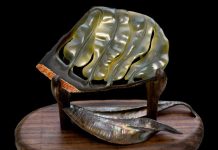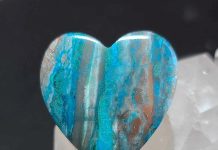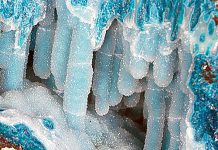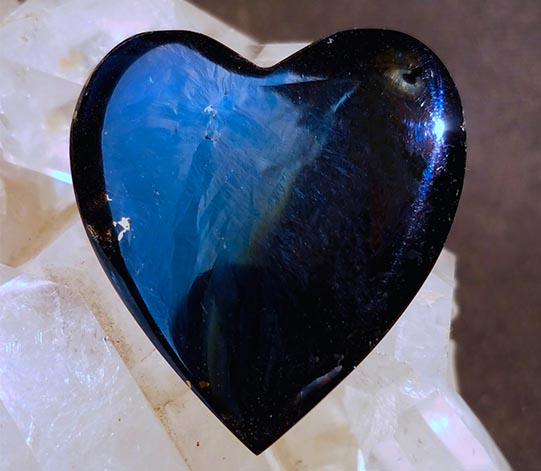
By Russ Kaniuth
Covellite is one of those materials that has no real use, except to a rock collector or lapidary! It’s a copper mineral that is found in various spots around the world, but collectors’ favorite source is the Leonard mine, in Butte, Montana.
Iridescent Appeal
Its main attraction is its iridescent, metallic indigo blue color, accented by pyrite streamers, which usually run through it. It has become exceedingly rare and quite pricey, but the beauty of this material always entices collectors and lapidary artists into buying it any chance they get.
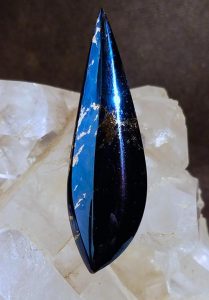 When buying covellite for lapidary purposes, I suggest buying precut slabs. This way you can see what you are getting for the price you will be paying. Normally, it is a very fractured material, but if the pieces are large enough, they can be cut into decent-size slabs that will be solid.
When buying covellite for lapidary purposes, I suggest buying precut slabs. This way you can see what you are getting for the price you will be paying. Normally, it is a very fractured material, but if the pieces are large enough, they can be cut into decent-size slabs that will be solid.
When choosing your material, know that most of the host stone will be very soft and brittle and will not cab very well, so you will need to determine how and where you will make your cuts for your preform cabochons. Focus on the solid blue areas, even if they have pyrite in them.
Prepare for Staining
There a few things you will need to know when starting the cabbing process. First off, it’s an extremely messy material to work with and will stain anything you get it on. Be ready to have stained cuticles and fingernails and black spots on anything it splatters on. It’s a soft material, and can fracture and chip easily, so starting on a wheel with a less aggressive grit is highly recommended. I start on a steel 180 grit diamond wheel to shape and dome my preforms; anything coarser will leave some very deep scratches that will make you work twice as hard later to get them out.
A metallic material will always show scratches far more than any other material, so after each step, you will need to stop, dry your stone well, and check for any deep scratches that will need to be tended to before moving on.
When working on different materials, each step of the process has difference variances; for example, when cabbing agates, it’s most important to shape and dome and smooth the cab between the 80 grit and the 220 grit wheels. Then you will use the 280 grit wheel as your real workhorse to make sure everything is smooth, with no scratches left in your work before moving on.
Stick With 600 Grit to Avoid Scarring
When working with covellite, since you will be starting on either a 180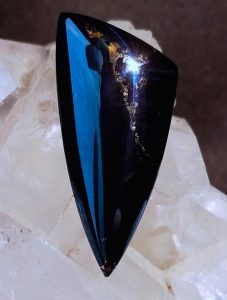 or a 220 grit wheel, it’s best to smooth things out lightly on the 280, but make the 600 do the rest of the work.
or a 220 grit wheel, it’s best to smooth things out lightly on the 280, but make the 600 do the rest of the work.
You don’t want to overdo it on the 280 grit wheel due to the softness of the stone, nor do you want to scar it with scratches that will be labor intensive to remove later, so use your 600 grit wheel to do the majority of your work. Don’t go any farther if there are any visible scratches, except maybe the microscratches and swirl marks that you see in most metallic materials. When moving onto your polishing wheels (1200 grit on), continue to cab in swirling, circular motions, and stop occasionally to dry off the cab to check how it’s looking.
Getting a good polish on covellite can be tricky. I’ve never had much luck using polishing compounds, since they tend to emphasize swirling microscratches, so I usually just go as high as 50000 grit on a nova wheel until the stone is nice and smooth, with a mirror polish on it.
Author: Russ Kaniuth
 Is the owner of Sunset Ridge Lapidary Arts and the cofounder of the Cabs and Slabs Facebook group. View more of his work at www.sunsetridgelapidary.com.
Is the owner of Sunset Ridge Lapidary Arts and the cofounder of the Cabs and Slabs Facebook group. View more of his work at www.sunsetridgelapidary.com.


